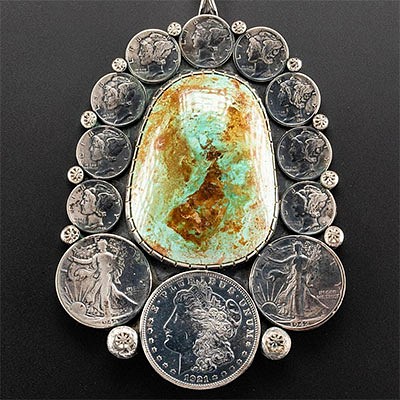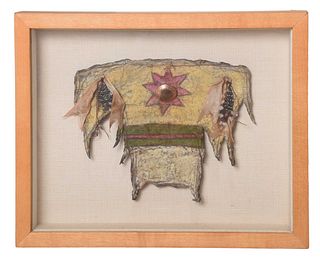Vibrant 20th C. Pacific Islands Tapa Cloth
Lot 113
About Seller
Artemis Gallery
686 S Taylor Ave, Ste 106
Louisville, CO 80027
United States
Selling antiquities, ancient and ethnographic art online since 1993, Artemis Gallery specializes in Classical Antiquities (Egyptian, Greek, Roman, Near Eastern), Asian, Pre-Columbian, African / Tribal / Oceanographic art. Our extensive inventory includes pottery, stone, metal, wood, glass and textil...Read more
Estimate:
$400 - $600
Absentee vs Live bid
Two ways to bid:
- Leave a max absentee bid and the platform will bid on your behalf up to your maximum bid during the live auction.
- Bid live during the auction and your bids will be submitted real-time to the auctioneer.
Bid Increments
| Price | Bid Increment |
|---|---|
| $0 | $25 |
| $300 | $50 |
| $1,000 | $100 |
| $2,000 | $250 |
| $5,000 | $500 |
| $10,000 | $1,000 |
| $20,000 | $2,500 |
| $50,000 | $5,000 |
| $100,000 | $10,000 |
| $200,000 | $20,000 |
About Auction
By Artemis Gallery
Feb 25, 2021
Set Reminder
2021-02-25 10:00:00
2021-02-25 10:00:00
America/New_York
Bidsquare
Bidsquare : American Frontier | Ethnographic | Tribal Art
https://www.bidsquare.com/auctions/artemis-gallery/american-frontier-ethnographic-tribal-art-6449
Featuring historical examples from the American, Spanish, and Mexican frontiers, as well as Native American, Ethnographic, Tribal, Oceanic, Spanish Colonial, more. All items offered for sale have been legally acquired, are legal to sell and are guaranteed to be as described or your money back. Artemis Gallery info@artemisgallery.com
Featuring historical examples from the American, Spanish, and Mexican frontiers, as well as Native American, Ethnographic, Tribal, Oceanic, Spanish Colonial, more. All items offered for sale have been legally acquired, are legal to sell and are guaranteed to be as described or your money back. Artemis Gallery info@artemisgallery.com
- Lot Description
Pacific Islands, frome Fiji, Samoa, Hawaii, Tonga, the Cook Islands, or possibly Papua New Guinea, ca. 1970 CE. A stunning tapa cloth presenting multiple decorative sinuous bands surrounded by upper and lower linear borders, all rendered in a vibrant color palette of russet red with dotted black borders on the natural beige ground. Tapa cloths are still used today for ceremonial occasions - sometimes made into clothing and masks for dances or offerings for marriages and funerals - as well as impressive wall decorations. This example is particularly impressive for its size and painstakingly executed decorative program. Size: 46.5" L x 29.75" W (118.1 cm x 75.6 cm)
According to the curatorial staff at Harvard University's Peabody Museum: "For hundreds of years, tapamaking was one of the most sophisticated plant-fiber technologies in the Pacific Islands. In the eighteenth century and before, tapa served as both daily and ceremonial clothing. It was made into headdresses, turbans, loincloths, sashes, girdles, skirts, and ponchos. The cloth was used for bedcovers, wall dividers, or mosquito curtains as well as for special wrappings of staff gods, for the outer layer of sculptures, for wrapping skulls, and for masks. Individuals were surrounded by tapa at birth, weddings, and death. Special cloths were made for dowries, diplomatic gifts, and treaty agreements. Large-scale accumulation of tapa signified wealth and aided in achieving status. It was also used to pay tribute. Barkcloth material, partially processed or as undecorated sheets, was an important trade item and was exchanged for plaited mats, adzes, whaleteeth, and sandalwood. Eventually, the increased availability of woven cotton cloth made in Asia and Europe led to a significant decline of hand-produced tapa, altered its use, and encouraged further changes in the ways in which tapa was decorated."
Provenance: private Salt Lke City Collection, Salt Lake City, Utah, acquired 1980s
All items legal to buy/sell under U.S. Statute covering cultural patrimony Code 2600, CHAPTER 14, and are guaranteed to be as described or your money back.
A Certificate of Authenticity will accompany all winning bids.
We ship worldwide and handle all shipping in-house for your convenience.
#138368Some fold marks and creases. A few minute perforations. Several small patches on verso indicative of repairs/stabilization; however, these are virtually impossible to see on the front of the tapa cloth. Otherwise, a very nice example with strong decorative motifs and vibrant hues.Condition
- Shipping Info
-
All shipping is handled in-house for your convenience. Your invoice from Artemis Gallery will include shipping calculation instructions. If in doubt, please inquire BEFORE bidding for estimated shipping costs for individual items.
-
- Buyer's Premium



 EUR
EUR CAD
CAD AUD
AUD GBP
GBP MXN
MXN HKD
HKD CNY
CNY MYR
MYR SEK
SEK SGD
SGD CHF
CHF THB
THB














